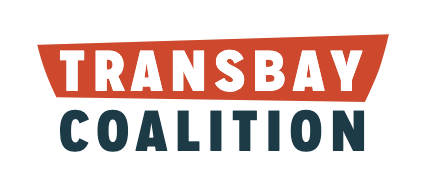On Friday, January 13, the MTC Legislation Committee will receive updates will about preparations for a regional transit funding measure in partnership with transit agencies. The presentation was also given at MTC’s Policy Advisory Council on Wednesday January 11.
This groundwork is being planned for 2023, for authorizing legislation in 2024, for a potential funding measure in a future year (potentially 2026). These steps for transportation funding are being taken while the region is also preparing for a regional affordable housing bond being considered for 2024 (see timeline graphic below).
This work in 2023 is picking up from an initiative for a regional transit funding measure before the pandemic, though the world has changed since then. There is greater awareness of the importance of funding for service, and greater need because of the fiscal cliff facing transit agencies as federal relief funding runs out and ridership regrows more gradually. And there’s been substantial progress on initiatives for better service coordination – and a need for funding to make the improvements.
Read on for information about what’s being considered for a transit measure, and a timeline showing opportunities to get involved starting this coming Spring.
MTC expects the upcoming transportation measure to focus on transit service. According to the staff report, “a broad consensus that sustaining and improving transit service is a top priority and should be a focus of a regional transportation measure. Stakeholders underscored that the Bay Area transit system requires robust investment to improve frequencies and spans of service, to better time transfers, to simplify complex fare structures, to improve the first- and last- mile experience, and to better serve the diverse needs across the Bay Area.”
The process includes stakeholder engagement and polling in the Winter, draft goals and analysis of revenue options in the Spring; broad public engagement in the Summer, and proposals for approval in the Fall.
Importantly, the planning is proposed to be done in conjunction with PlanBayArea 2050+, which is intended to be a new kind of planning for the Bay Area focusing primarily on developing service goals to move riders, rather than the historical planning based on capital projects submitted separately by every agency and county.
In addition to fixed route transit, the planning will consider sustainable transit and active transportation more broadly. MTC reports that “many stakeholders underscored that public transportation need not be limited to traditional fixed-route public transit. New active transportation investments, expanded bikeshare programs, expanded paratransit services, and new mobility alternatives to the automobile could be characterized under a broader “public transport” category, while better responding to the mobility needs of the public in this post-COVID era. “
One key question for MTC is whether to focus on transit; how much to add multi-modal sustainable transportation, and whether to include local streets and roads. MTC reports that “County transportation agency staff recommended incorporating local street and road repairs into a future regional measure as a way to gain broader support, especially outside the region’s urban core.” Road repair can provide benefits not just for passenger vehicles, but also bus riders, bicycles and pedestrians.
The development of the measure will consider not only what to spend the money on, but policies for how to spend it. MTC’s considerations include “cross-cutting policy goals such as advancing social equity, climate mitigation and resilience, and adaptability to an uncertain future. MTC reports that “stakeholder discussions helped to illuminate that they should guide the measure’s overall expenditure plan and any associated policies.”
This graphic shows how the transportation funding timeline overlaps with the housing timeline.
